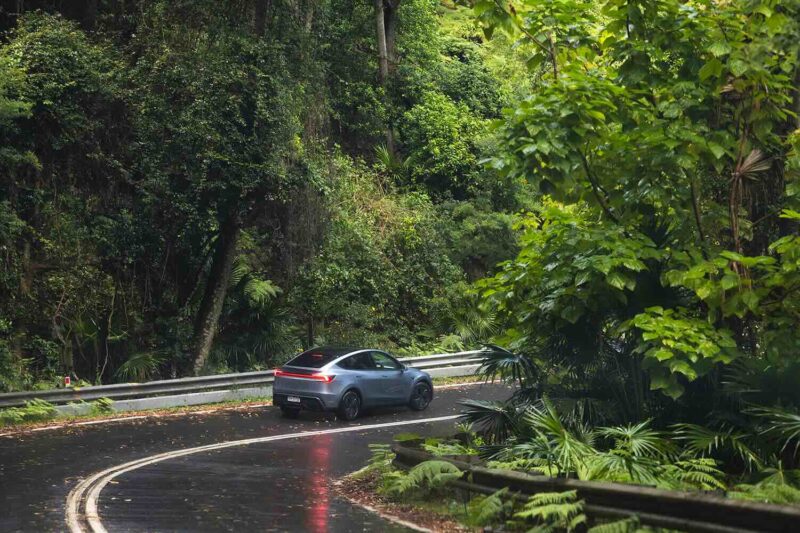Tesla electric vehicle sales rebounded strongly in the month of May, led by the refreshed Model Y which helped boost the electric SUV’s sales to its highest level since March, 2024.
New data released by the Electric Vehicle Council on Tuesday shows that Tesla recorded 3,897 sales in May, nearly eight times the 500 recorded in April, a lull the company blamed on delays on the arrival of ships carryings its EVs from China.
Tesla sales in Australia and across the world have slumped badly in 2025, blamed on the retooling of factories for the new Model Y, customers holding off purchases until the new model is available, and consumer pushback against the political declarations and erratic behaviour of CEO Elon Musk.
Although the refreshed Model Y has been available in Europe and other countries for several months, the company only started deliveries in Australia in May and its rebound in Australia is the biggest and most positive seen in any market to date.

According to the EVC, there were 3,580 Model Y sales in May, more than double the 1,609 in the same month last year, and its highest level since selling 4,379 vehicles in March, 2024. Sales of the Model 3, which had its relaunch early last year, totalled just 317 in May, down from 1,958 in the same month a year ago.
Even though Tesla’s overall sales in May are up 10 per cent from the same month a year ago, its year to date sales are still down 48 per cent to 9,557. The Model 3 has slumped 70 per cent to 2,583, but the Model Y is now down just 27.4 per cent for the first five months of the year to 6,974.
Another couple of strong months of deliveries will see the Model Y catch up to last year’s sales. How much growth it delivers over the remainder of the year remains to be seen, as the company deals with increased competition, and as Musk steps back from his role in the Trump administration.
The EVC also releases data for another specialist EV maker Polestar, which also recorded a strong month with 243 sales, a rise of 66 per cent from 146 in the same month a year ago.
It has since released two new models, with the Polestar 4 its best performer with 133 sales in May and 502 so far this year, and the more expensive Polestar 3 adding 28 sales in May, to take its year to date total to 71. The Polestar 2 added another 82 sales, taking its total for the year to 261, down 43 per cent from the same period a year earlier.
Sales data for the rest of the auto industry in Australia will be released by the FCAI on Wednesday, and that will include EV sales data from other car makers.
What is clear is that the rebound in Tesla sales will help boost the share of EVs in the Australian new car market, which had peaked above 10 per cent last year but fell to just above 5 per cent earlier this year.
Tesla once held a commanding position in the Australian market, accounting for more than 60 per cent of sales, but that market share has slumped dramatically in recent months, even though it is clear that the Model Y will retain its position as the best selling EV on the Australian market, and by some margin.
Tesla’s head in Australia, Thom Drew, told The Driven early last month that the company expects “big things” from the Model Y sales in the June quarter.
“We have just had the first vessel arrive … the vehicles start delivery this week …. with over 3,500 cars on board,” he said. “There’s more to come over the (June) quarter. So we’re expecting some big things this quarter.”
See: Tesla expects “big things” from new Model Y sales as first Australia deliveries start
And: New Tesla Model Y review: World’s best selling EV is now even better, and it costs less
And: How Tesla surrendered its dominance of Australia’s EV market
And: Australian electric vehicle sales by month and by model in 2025

Giles Parkinson is founder and editor of The Driven, and also edits and founded the Renew Economy and One Step Off The Grid web sites. He has been a journalist for nearly 40 years, is a former business and deputy editor of the Australian Financial Review, and owns a Tesla Model 3.

